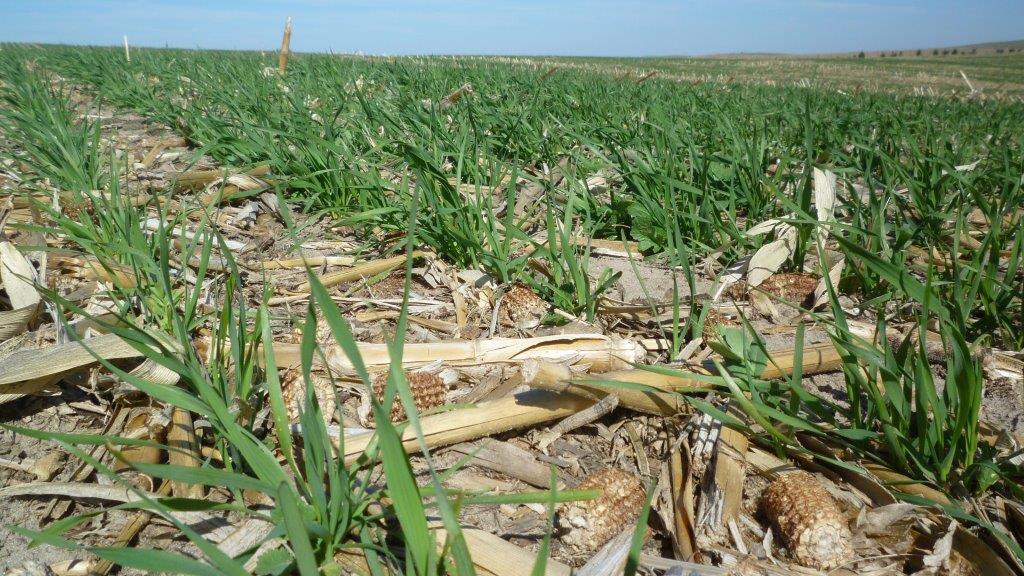
As a teenager, I remember coming home from football practice, eager to jump in the tractor and run the ripper until the wee hours of the night. That was some of the best times as a junior high and high schooler, being able to help out my dad and run the ripper. I didn’t know that there was a different way to have success with the corn on corn we were growing. I thought you had to have the seedbed fully prepared or else it would seal up over the top and the corn wouldn’t be able to come through the crusted-over soil. I thought tillage was the answer.
Now that my soil health journey has taken off, and I’ve been able to learn from others, I know biology is the answer, not tillage. The ripper is still sitting out behind the shed, where it’s been for years, and it won’t ever move again (as long as my dad and I are making decisions).
Minimal disturbance is one of the key principles of soil health. In order to build our soils, we must improve the “home” of the microbes and we must increase the biologic diversity in our soils. If we destroy that home via tillage, we destroy that habitat for those crucial microbes. If your house was destroyed year over year, you’d probably relocate, or at least you wouldn’t be able to flourish. We see the same thing happen in our soils.
Now that we’ve adopted no-till across our entire farm, we’re seeing those soil structure gains and we no longer have crusting on our soils. We have good water infiltration, and we don’t have near as many weeds getting stirred back up. We’re removing our residue via microbe and earthworm activity, which is recycling nutrients and residue for us. Now that we’re a couple of years into it, we’re having a hard time keeping residue on the soil, and we have had to be more aggressive with carbon inputs from cover crops to feed the system.
It wasn’t until we got into cover crops that our no-till systems really started to work. I encourage farmers to adopt more than one of the principles of soil health at a time. It seems that no-till and cover crops go hand-in-hand and will help you have success along your soil health journey.
Other tips for farmers looking to switch to no-till:
- Make sure your planter is tuned in and set correctly, so you get consistent depth and seed-to-soil contact.
- As you upgrade planter or other equipment, don’t be afraid to downgrade the size of your tractor or sell your tillage equipment you’ll no longer need it. Remove that temptation from your farmstead and have extra capital in your pocket to make other upgrades to implement a no-till system successfully.
- Start by no-tilling soybeans. We started no-tilling soybeans on our farm in 1986 and have had great success since.
We know that improving soil structure, organic matter, and other soil health components can take a while. But if you are evaluating other agronomic parameters, such as soil biology, improving nutrient flow, reducing weeds, and improving consistency of the crop, then gains can be realized quickly. We have to continue to reduce erosion, improve our impact on carbon in the environment, and implement a no-till or very low disturbance system.
Written by:
Mitchell Hora (Washington, Iowa)
Owner of Continuum Ag, LLC
For more information check out Mitchell’s website, www.continuumagllc.com or email him at mitchell@continuumagllc.com
This article first appeared in the 8th Edition of Green Cover's Soil Health Resource Guide.
Also check out the 10th edition, our latest Soil Health Resource Guide, over 90 pages packed with scientific articles and fascinating stories from soil health experts, researchers, farmers, innovators, and more! All as our complimentary gift to you, a fellow soil health enthusiast!
Get the Free Guide
This article first appeared in the 8th Edition of Green Cover's Soil Health Resource Guide.
Also check out the 10th edition, our latest Soil Health Resource Guide, over 90 pages packed with scientific articles and fascinating stories from soil health experts, researchers, farmers, innovators, and more! All as our complimentary gift to you, a fellow soil health enthusiast!